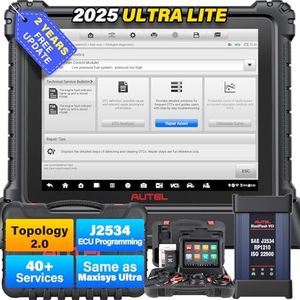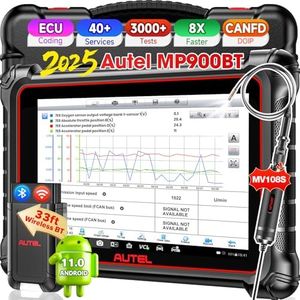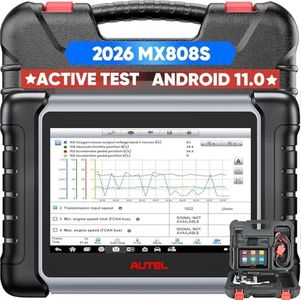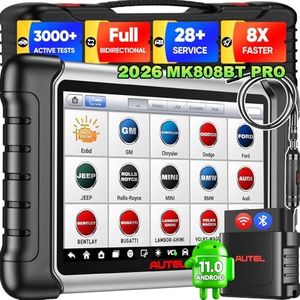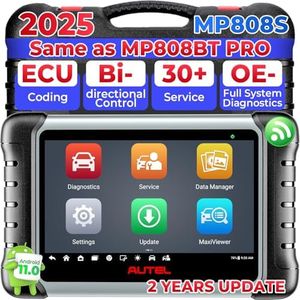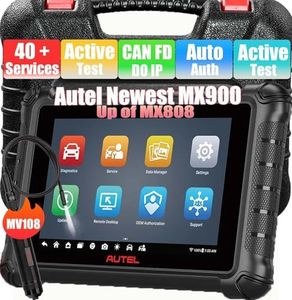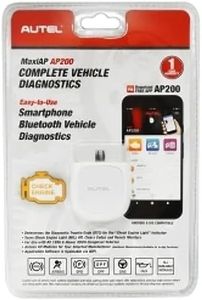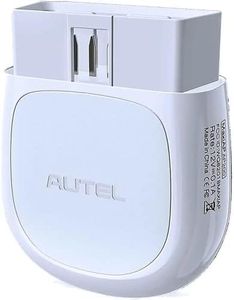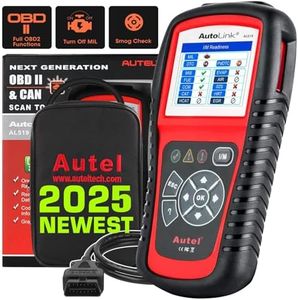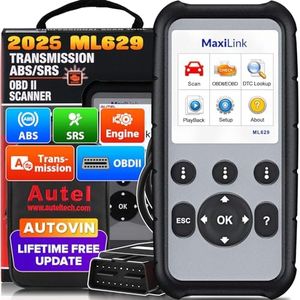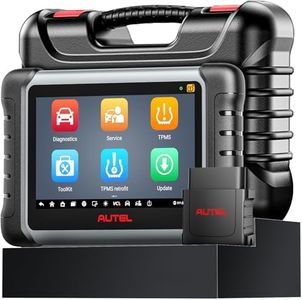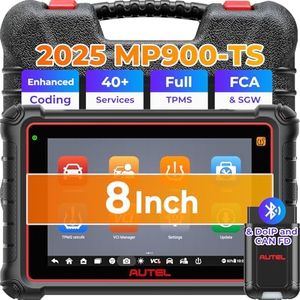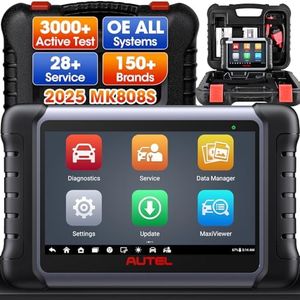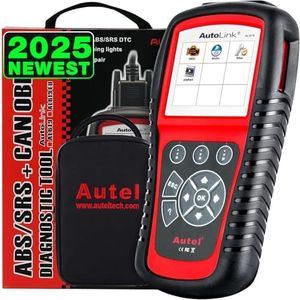We Use CookiesWe use cookies to enhance the security, performance,
functionality and for analytical and promotional activities. By continuing to browse this site you
are agreeing to our privacy policy
10 Best Autel Scanners
From leading brands and best sellers available on the web.Buying Guide for the Best Autel Scanners
Choosing the right automotive scanner can seem overwhelming, as there are many features and specifications to consider. The right scanner will help you diagnose vehicle issues quickly and efficiently, making car maintenance or repairs much easier. To make the right choice, it's important to think about your typical needs: are you a home mechanic, a professional technician, or someone who just wants basic troubleshooting? Each of these uses points to different types of scanners, so being clear about your intended use will help you focus on the most important features.Vehicle CoverageVehicle coverage refers to the range of car makes, models, and years that the scanner can work with. This is important because some scanners only work with certain brands, countries, or years of production. Scanners usually break down into basic (most cars from mid-90s to now, especially OBD2 compliant ones), enhanced (covering more systems or older cars), and advanced (broader range, including European, Asian, and newer models). To pick the right coverage, check what vehicles you plan to work on and make sure the scanner lists them specifically. Broader coverage is helpful for shops or multi-car households, while narrow coverage might be enough for owners of a single car brand.
Diagnostic FunctionsDiagnostic functions describe what systems and parts of the car the scanner can read, such as engine codes, ABS, airbags, and more. Basic scanners read and clear check engine lights, mid-level devices add functions like airbag or transmission diagnostics, and advanced ones offer deep functions like coding, adaptations, and live data. Choose a scanner based on the type of issues you want to troubleshoot; basic needs mean a simple scanner is fine, but for working with complex systems or making repairs, advanced diagnostic functions become necessary.
Live Data and GraphingLive data and graphing allow the scanner to show real-time information from the car's sensors and systems, often in easy-to-read graphs. This feature helps spot patterns or issues while the car is running and is very useful for troubleshooting intermittent problems. Simple scanners may only show limited or no live data, while more advanced types display many parameters with graph options. If you want to do detailed diagnostics or prefer visual information, look for strong live data and graphing features; if you're only clearing codes, this may not be necessary.
Service and Reset FunctionsService and reset functions include things like resetting oil service lights, steering angle sensors, battery registration, and EPB (electronic parking brake) release. These functions save time after regular maintenance or part replacement. Entry-level scanners may offer no service functions, while advanced ones have many built-in. Think about what kinds of service tasks you plan to do; basic maintenance at home might need only a few reset options, while a garage technician will need wider support for all common resets and calibrations.
Update and SupportUpdate and support relates to how often the scanner can be updated with new vehicle coverage or features, and the kind of help you can get if an issue arises. Regular updates keep your scanner useful as cars change over the years. Some scanners offer free lifetime updates, others require subscriptions or annual fees. If you want your tool to stay current, look for clear update policies and good manufacturer support. If you don't plan to use it long-term, frequent updates might not be as important.
Display and UsabilityDisplay and usability refer to the screen size, interface, and overall ease of use of the scanner. Some have simple, button-based designs with small screens, while others offer touchscreens and more user-friendly layouts. A larger, clearer display makes it easier to read data and follow instructions, especially if you'll be using the scanner a lot. If you prefer simplicity, a basic interface is fine; for frequent or complicated use, opt for an ergonomic and visually clear scanner.
